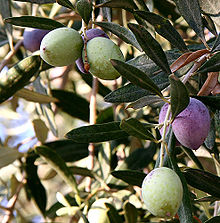Poinsettias
Our own native poinsettia. Isn't it pretty?
Evergreen Trees
(These holiday suckers have not yet located hosts)
One of my favorite mind-blowing facts about evergreens has to do with just how amazing their needles are. They are designed to shed snow easily and survive through bitter cold, thanks to their shape, waxy coating, and their own kind of antifreeze. But here's the best part: needles are actually "normal" broad leaves rolled up! (Mr. Nature Geek calls them "leaf burritos")
Ever wonder how to tell a pine from a fir from a spruce tree? Here's how:
Pines
have needles in groups of 2-5.
Firs
Holly
This species in particular is American holly (Ilex americana)
There are 13 or so species of holly in the United States, and 400 worldwide. Not all of them produce berries, however! Nearly all hollies are what is called dioecious, (pronounced di-EE-shous) which means that there are separate male and female plants. It's only the females that produce berries. But remember, without the male plants the females wouldn't be able to produce those beautiful red berries, so this season, show the male holly some love too.
Mistletoe
Think about this the next time you're kissing your sweetheart beneath the mistletoe: the name mistletoe means "dung on a twig." This refers to the way that mistletoe seeds are often spread; through bird droppings landing on a tree. As I eluded to an earlier post, mistletoe is also a parasite, sucking nutrients out of its host through its roots. Just why early Scandinavians associated this plant with their goddess of love, Frigga, I have no friggan idea.
Olives (Olive oil)
Olea europaea, known commonly just as "olive tree"
There are over 20 species of olives around the world, but only one (Olea europaea, and its thousands of varieties) is edible and used make oil. And talk about being productive; olive trees have been reported to live over 2,000 years and still produce fruit!
Reindeer (Caribou)
Sorry boys, you can't pull Santa's sleigh.
Over the years, I've noticed that my joints have more snap, crackle, and pop than a bowl of Rice Krispies. But the snapping of a reindeer's tendons has nothing to do with age. Instead, the clicking sound produced by the reindeer's feet help it locate the rest of its herd in the heaviest of snowstorms. And while both male and female reindeer have antlers, it's only the females that retain them in the winter. Does this mean that Donner is really....Donna?
No matter what holiday you are celebrating this season, have a wonderful one! And for you, my fantastic followers, I have a surprise in store in the new year...stay tuned!









No comments:
Post a Comment